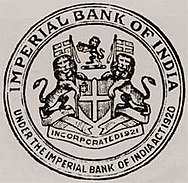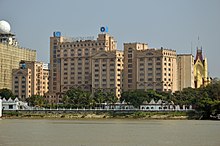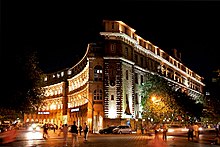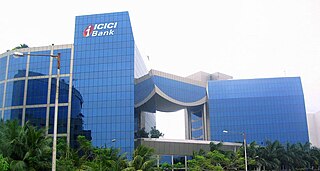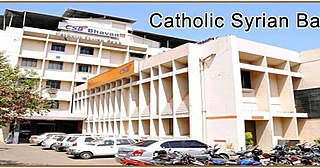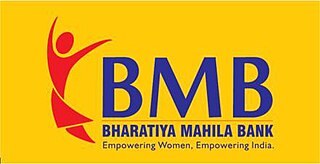- SBI FL Gomes Road Branch, Vasco da Gama, Goa
- SBI Rura Branch, Rura, Uttar Pradesh
- SBI Hudkeshwar Branch, Nagpur, Maharastra
 | |
 State Bank Bhavan, Nariman Point, Mumbai | |
| Company type | Public |
|---|---|
| |
| ISIN | INE062A01020 |
| Industry | Banking, financial services |
| Predecessor | Imperial Bank of India (1921 – 1955)
|
| Founded | 1 July 1955 State Bank of India
|
| Headquarters | State Bank Bhawan, M.C. Road, Nariman Point, Mumbai, Maharashtra, India |
Number of locations | India: 22,219 Branches 62,617 ATMs International: 229 Branches in 31 countries |
Area served | Worldwide |
Key people | |
| Products | |
| Revenue | |
| Total assets | |
| Total equity | |
| Members | 48 crores+ [4] |
Number of employees | 2,32,296 (31 March 2024) [5] |
| Parent | Ministry of Finance (Government of India (57.5%)) |
| Subsidiaries |
|
| Capital ratio | Tier 1 11.03% (2022) [6] |
| Rating | |
| Website | sbi.co.in bank.sbi |
| Footnotes /references [3] [8] [9] [10] | |
State Bank of India (SBI) is an Indian multinational public sector bank and financial services statutory body headquartered in Mumbai, Maharashtra. SBI is the 45th largest bank in the world by total assets and ranked 221st in the Fortune Global 500 list of the world's biggest corporations of 2020, being the only Indian bank on the list. [11] It is a public sector bank and the largest bank in India [12] with a 23% market share by assets and a 25% share of the total loan and deposits market. [13] It is also the tenth largest employer in India with nearly 250,000 employees. [14] [15] [16] In 2023, the company’s seat in Forbes Global 2000 was 77. [17]
Contents
- History
- Administrative Offices and Branches
- Domestic
- International
- Former Associate Banks
- Non-banking subsidiaries
- Other SBI service points
- Yes Bank Investment
- Listings and shareholding
- Employees
- Philanthropic Arm
- Gallery
- See also
- References
- External links
On 14 September 2022, State Bank of India became the third lender (after HDFC Bank and ICICI Bank) and seventh Indian company to cross the ₹5 lakh crore market capitalisation on the Indian stock exchanges for the first time. [18] The largest public lender in the country reached a milestone on April , 2024, when its market capitalisation surpassed ₹7 lakh crore, making it the second public sector undertaking (PSU) to do so, after Life Insurance Corporation. [19] The Reserve Bank of India (RBI) has identified the SBI, HDFC Bank, and ICICI Bank as Domestic Systemically Important Banks (D-SIBs), which are often referred to as banks that are “too big to fail”. [20] [21]
The bank descends from the Bank of Calcutta, founded in 1806 via the Imperial Bank of India, making it the oldest commercial bank in the Indian subcontinent. The Bank of Madras merged into the other two presidency banks in British India, the Bank of Calcutta and the Bank of Bombay, to form the Imperial Bank of India, which in turn became the State Bank of India in 1955. [22] Overall the bank has been formed from the merger and acquisition of more than twenty banks over the course of its 200-year history. [23] [24] The Government of India took control of the Imperial Bank of India in 1955, with Reserve Bank of India (India's central bank) taking a 60% stake, renaming it State Bank of India.
On 16 August 2022, in an attempt to facilitate and support India's start-ups, SBI announced the launch of its first "state-of-the-art" dedicated branch for start-ups in Bengaluru. [25]


